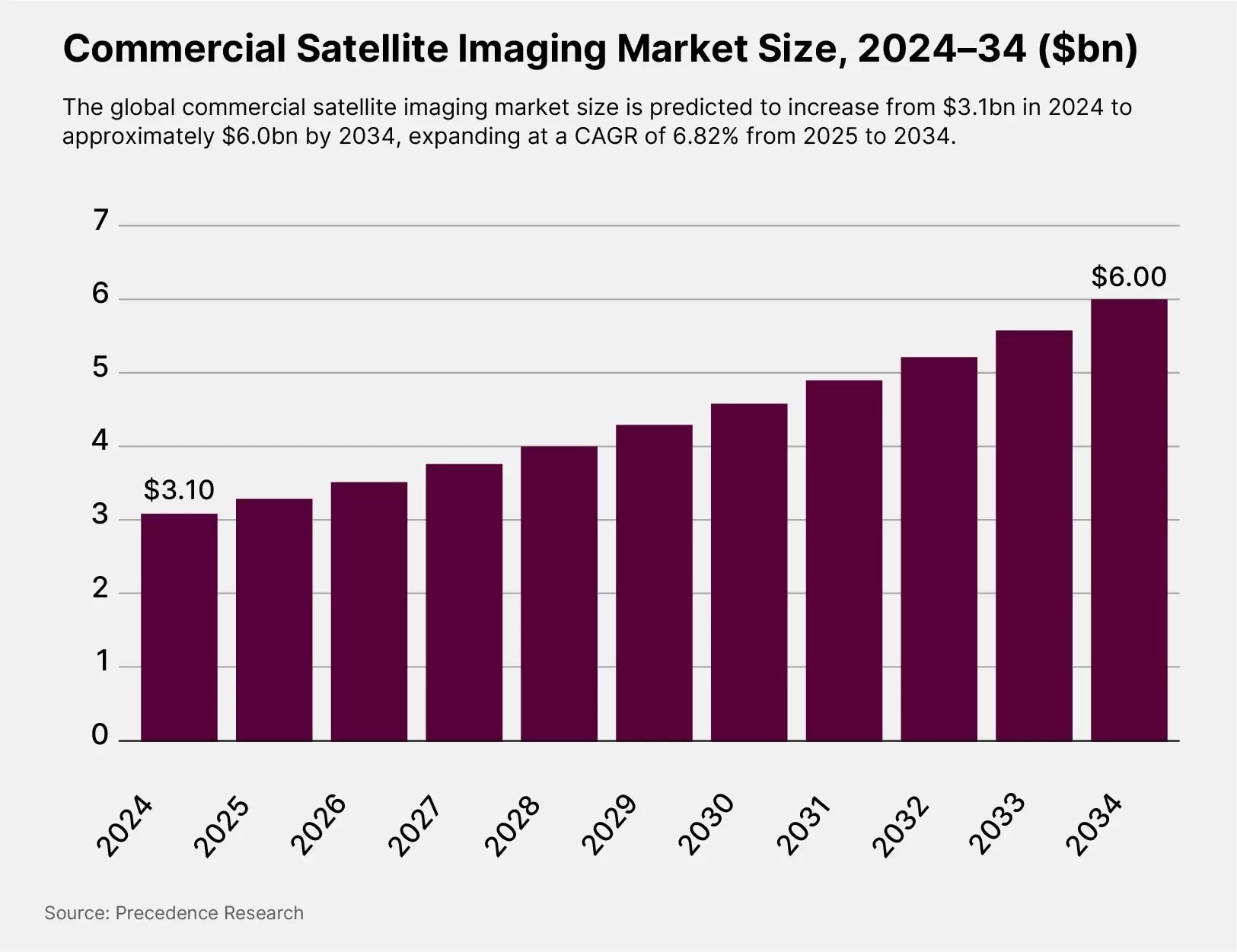With a constellation of over 200 satellites in orbit, Planet Labs [PL] offers enviable imaging coverage of the Earth’s surface.
While its primary business is selling GIS data captured by its satellites to clients, President and CFO Ashley Johnson explains that the sky’s the limit, thanks to recent advancements such as artificial intelligence (AI).
Integrating advanced imaging technology and AI is helping the company to identify more quickly the data that might be useful to customers, thus vastly decreasing the gap between collection and sale to a potential end user.
The company is developing the ability “to do AI at the edge of space”, Johnson says. “What this enables is understanding, in the moment: did you catch the image that you wanted to be able to capture, or was it obstructed by a cloud, for example?”
As simple as this sounds, as an AI use case it allows Planet (as the firm is typically referred to) to sift through the massive amount of data its satellite constellation collects and ultimately sell it to a wider range of customers, from defense contractors to environmental agencies.
Indeed, given Planet’s wide customer base, it stands to benefit significantly from any expansion of the market. Precedence Research, which cites Planet as a leader in the space, estimated that the commercial satellite image market could nearly double from $3.31bn in 2025 to $6bn in 2034, growing at a CAGR of 6.82%.

Making Data Scalable
While the cost of deploying satellites with bleeding-edge imaging technology remains high, Planet’s advantage comes from the way it scales its data to sell to different customers. Rather than selling a data set solely to a single government bidder, for example, Johnson explains, “we’re creating a data set that’s a one-to-many data model, or business model, which means that we can offer much more affordable data.”
By selling the same data set to different customers for different use cases, Planet also makes its services accessible to a wider range of users, from large public-sector entities to smaller private companies using the data for experimental purposes.
This has its financial benefits, as well. As Johnson observes, Planet’s “target gross margins are 70-80%, which is very much in line with, for example, a software-as-a-service company or any type of data-as-a-service business.”
The benefits of this model are also showing up on the company’s balance sheet. In its most recent earnings release, for Q4 2024, the company recorded its first quarter of adjusted EBITDA profitability, and projected positive cash flow within the next two years.
With the majority of its revenue coming from recurring contracts, expanding its client base will be key to growth, Johnson explains. While early adopters are a key part of Planet’s client base, the next section of the market has a lot to offer, she says.
“I’m excited about the wave of new customers that we’re not tapping into today really getting value from the data. And that’s both an excitement around the financial value that we’re going to unlock with that, but also the impact that we can have through that next wave of customers.”
Machine-Learning-Ready
Part of the way Planet Labs is expanding its capabilities is through partnerships, especially in integrating AI. Launched in January, the company’s Pelican-2 satellite contains a Nvidia [NVDA] Jetson platform, which aims to reduce the time between data capture and value for customers, according to the company’s press release.
While AI is accelerating data collection for Planet Labs, its capacity to analyze data is even more attractive. The firm’s website notes that its data sets are 100% machine-learning-ready. A partnership with AI start-up Anthropic announced in March 2025 aims to help transform this data into actionable analysis for clients.
“What large language models really do is accelerate that time to value for the end customer,” Johnson notes. “We designed the data sets that we were bringing to market from the start to be about machine learning, not about an analyst looking at a picture, because the volume of data that we’re providing just makes that impossible to even contemplate.”
This results in analysis that takes “virtually seconds”, where it used to take months or years.
By changing how quickly GIS data sets can be analyzed, AI is also opening up entirely new markets for Planet. Johnson cites disaster management and risk assessment as two key areas of expansion, benefitting clients in sectors as diverse as insurance and oil and gas.
California-based energy company PG&E [PCG] is one such client, having partnered with Planet to monitor vegetation levels around its power infrastructure, allowing it to quickly address potential wildfire risks.
Beyond the current use cases, Planet’s next target market could be one that does not even exist yet, Johnson muses.
“Planet’s mission from the get-go has been using space to help life on Earth. And I think the data sets that we have combined with AI will unlock the ability to understand things about our planet that we’re just not looking at today because we don’t even realize it’s there.”
Continue reading for FREE
- Includes free newsletter updates, unsubscribe anytime. Privacy policy





